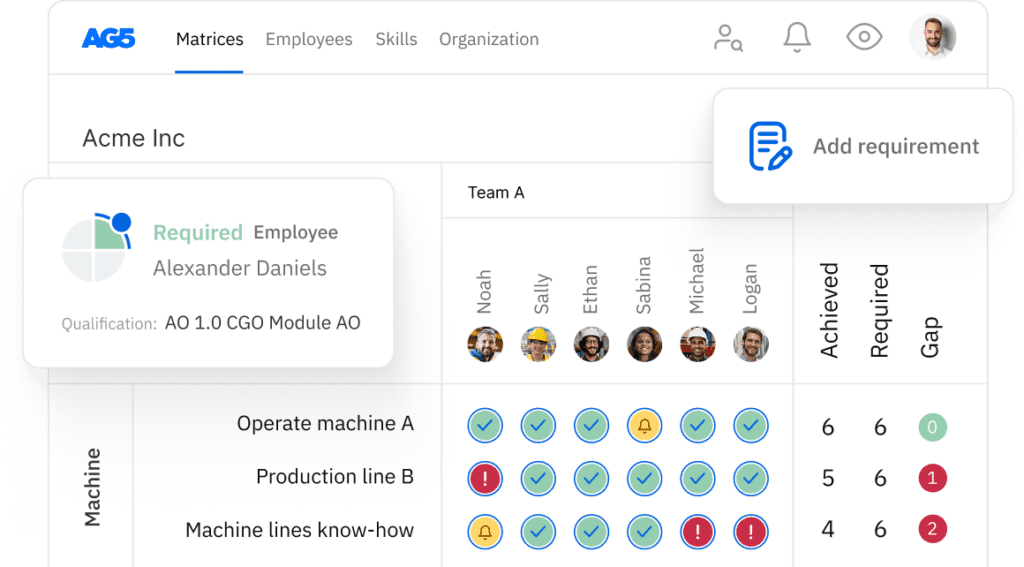What’s the difference between ‘capacity’ and ‘competence’?
During this article we explain the key distinctions between capacity and competence, offering insights into their significance and practical implications for organizational planning and workforce management.

The terms ‘capacity’ and ‘competence’ appear regularly in management literature when describing individual employees or workforces as a whole. But often the two terms aren’t clearly defined and are even used interchangeably, which isn’t totally correct.
So what’s the difference between capacity and competence? This is the question we’ll be answering in this article.
Capacity vs. competenceCopied
So what’s capacity?
A capacity relates primarily to someone’s hidden potential. Think of it as the foundation for one or more competences – fertile ground in which functional skills and competences could grow if properly nurtured.
If you show capacity in a particular field, this means that you have the apptitude to master certain tangible skills/competences that you have yet to acquire or are in the process of acquiring. In time and with practice, you’ll be able to transform your capacity into competence. Someone who has the capacity to do something will be able to acquire more skills in this field than someone with a lesser capacity.
The term ‘capacity’ is sometimes used at an organizational level where it has a different meaning. Here ‘capacity’ means the full range or spectrum of competences within the organization, department, or team that it can capitalize on. The sum total of the competences available determines the extent of the organization’s capacity in a given domain. Often, the broader this spectrum, the greater its competitive advantage.
So, what’s competence?Copied
A competence is the combination of the following:
- Knowledge – the expertise and experience someone has.
- Skills – the physical or mental abilities someone has. Skills can be divided into hard skills (functional or technical skills required to perform a given task, job, or role within an organization) and soft skills (social and/or communications skills, language abilities, and personal habits or characteristics).
- Attitudes & personality traits – examples include someone’s attitudes and world views, which are generally a question of ‘nurture’ rather than ‘nature’.
It’s competence that helps put operational processes into motion and is vital to an organization’s ability to operate. Competences are the building blocks and control factors that determine optimum long-term performance and strategy, given the available resources – the grease in the wheels of your organization.
Core competences are the unique skills and expertise that set your organization apart from your competitors.

ExamplesCopied
So much for the theory – it’s time for a few examples to illustrate the differences a little more clearly.
- The ability to comprehend ICT systems and programming languages is the capacity you need to acquire and master certain competences, such as programming and developing applications.
- A feel for language or the ability to write well is the capacity you need to set up different types of communication or promotional activity within your organization.
- Numeracy and mathematical accuracy are the capacities you need to acquire financial competences, for example setting up, auditing, and presenting your company’s annual report.
- Your sales team knows who your customers are and what they want, and is familiar with using your CRM system, gathering data, and transforming this into valuable, strategic information. Your marketing experts know how to extract insights from this data to set up effective and appealing campaigns to win new customers. All these competences form the basis of your organization’s capacity to devise custom solutions for specific customers or prospects.
ConclusionCopied
Although the line between capacity and competence is fairly thin, they remain two distinct concepts. Nonetheless, they do influence one another and one doesn’t exist without the other. Capacity is vital to acquiring, mastering, and honing certain competences or skills.
If you’re looking to make the most out of your workforce’s potential, then having a complete picture of their capacities and competences is indispensable. Skills matrices provide just what you need! Discover for yourself what skills matrices are and how they can benefit you.
Opt for AG5’s skills management software if you’d like to get off to a flying start. Find out how our software works or schedule a free demo, as many companies before you have done.

